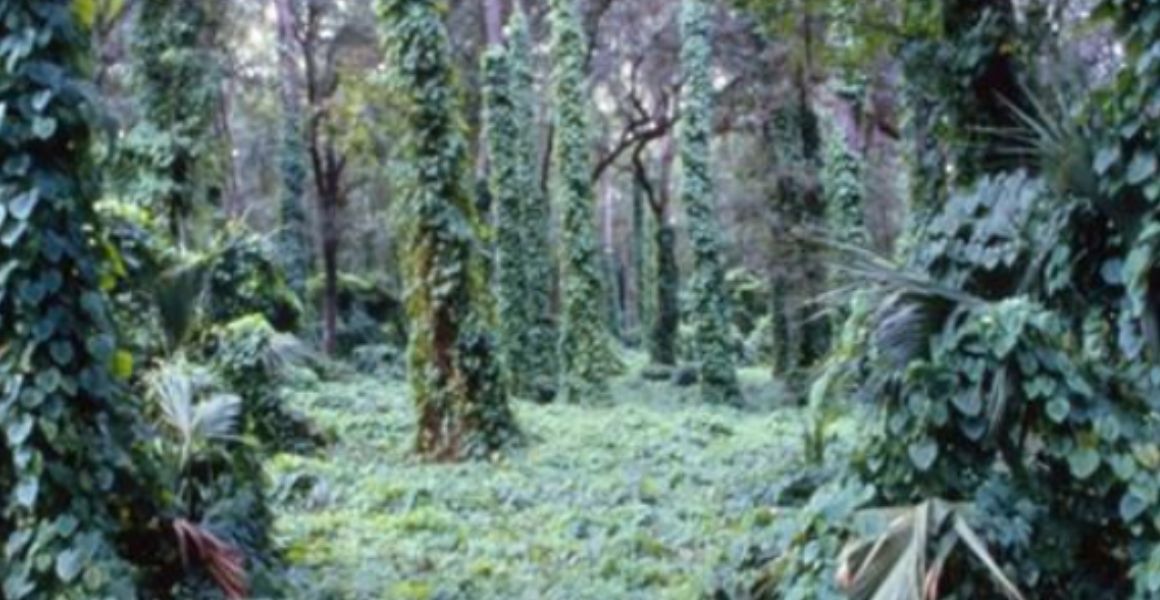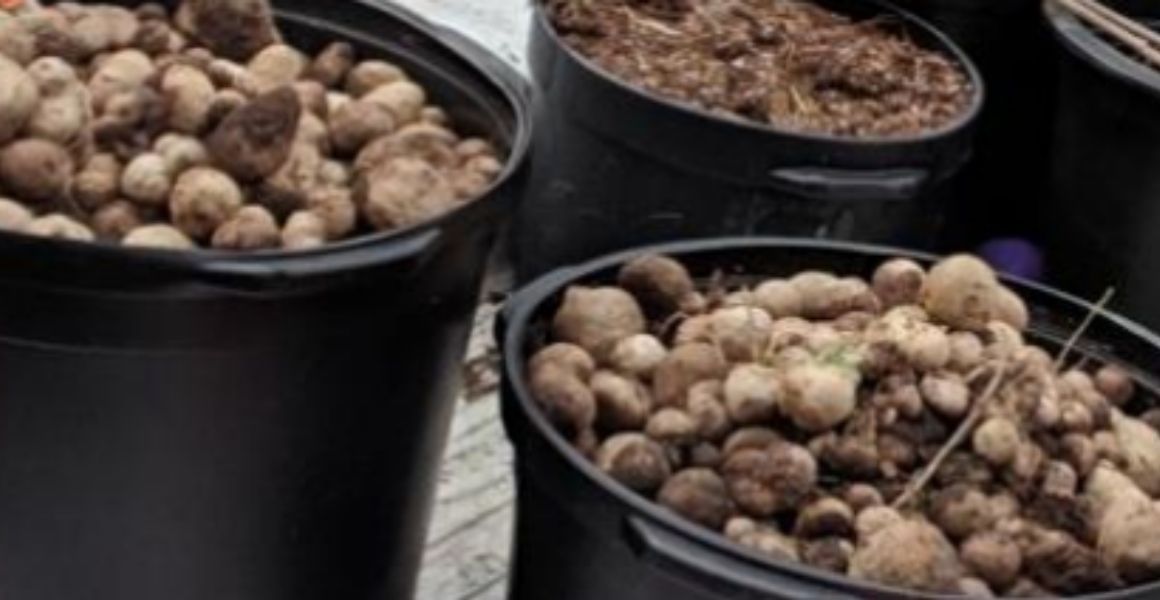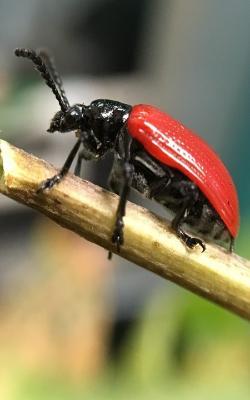Air Potato
Dioscorea bulbifera L. (Dioscoreaceae) is an herbaceous, climbing vine native to tropical Asia and sub-Saharan Africa. This vine was introduced into Florida in 1905. Air potato is extremely fast growing and can grow as much as 8 inches in a single day. Vines can top trees and other vegetation, and effectively killing vegetation beneath.
Air potato vines reproduce vegetatively by producing aerial bulbils in the fall. These bulbils fall to the ground and produce new vines in the spring. Removing these bulbils before they can sprout is an good way to reduce the spread of this vine. Bulbils should be frozen for several days before being disposed of permanently.



